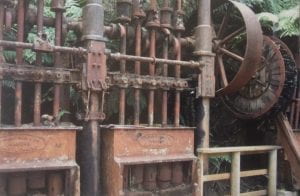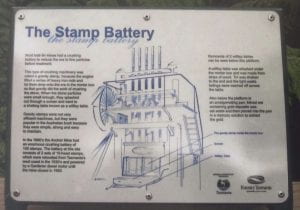Queenstown, like Lottah, is a mining town in Tasmania but it is on the west coast of the state.
Around 1862, alluvial gold was found nearby, and in 1881 the Mount Lyell Gold Mining Company was formed. About ten years later they started searching for copper.
In the mid 1890’s, the actual town began to develop – a post office and a general store. The population in 1900 was just over 5000 in the town of Queenstown but around 10,000 in the whole mining district. In the early part of the 20th century, the town had many hotels, theatres, churches and schools but many of these are beginning to disappear since the mining company went into care and maintenance in 2014.
Queenstown had a bad reputation because of the pollution occurring from the Mt Lyell smelting works. Visitors would say it was like a moonscape as the trees had been cut down to feed the smelters needed for melting the copper from the underground mine. The smelters also sent out sulphur dioxide fumes which fell to the ground when it rained and was eventually washed into the King and Queen River.
But the most fascinating fact I have read about is that the Queenstown football oval has been inducted into the Tasmanian Football Hall of Fame. Why you might ask? Well the oval is gravel as grass was hard to grow due to the pollution and heavy rain.

Now to Queenstown’s link to my family history.
Firstly I thought it was through the Smith line – Robert Edward Smith was a sawyer on the west coast around Queenstown and Strahan. His wife, Irene Somers, was my great grandmother who was born in St Helens or Lottah area. But when my father had a DNA test, we found he wasn’t related directly in the Smith line. All his cousins from there were only half-cousins. They all had Samoan heritage but dad didn’t.
We found instead that my great grandmother had a child from another person Alexander Dawson who lived and worked as a miner in Queenstown. My dad’s mother was that child. She was brought up as a Smith and was known as the eldest child in the family.
We don’t think Alexander ever knew he had another child. But in 1912, Alexander and two of his brothers survived the North Mt Lyell mining disaster. I am presently researching the miners who died as well as those who survived and were rescued. This research is on WikiTree.



